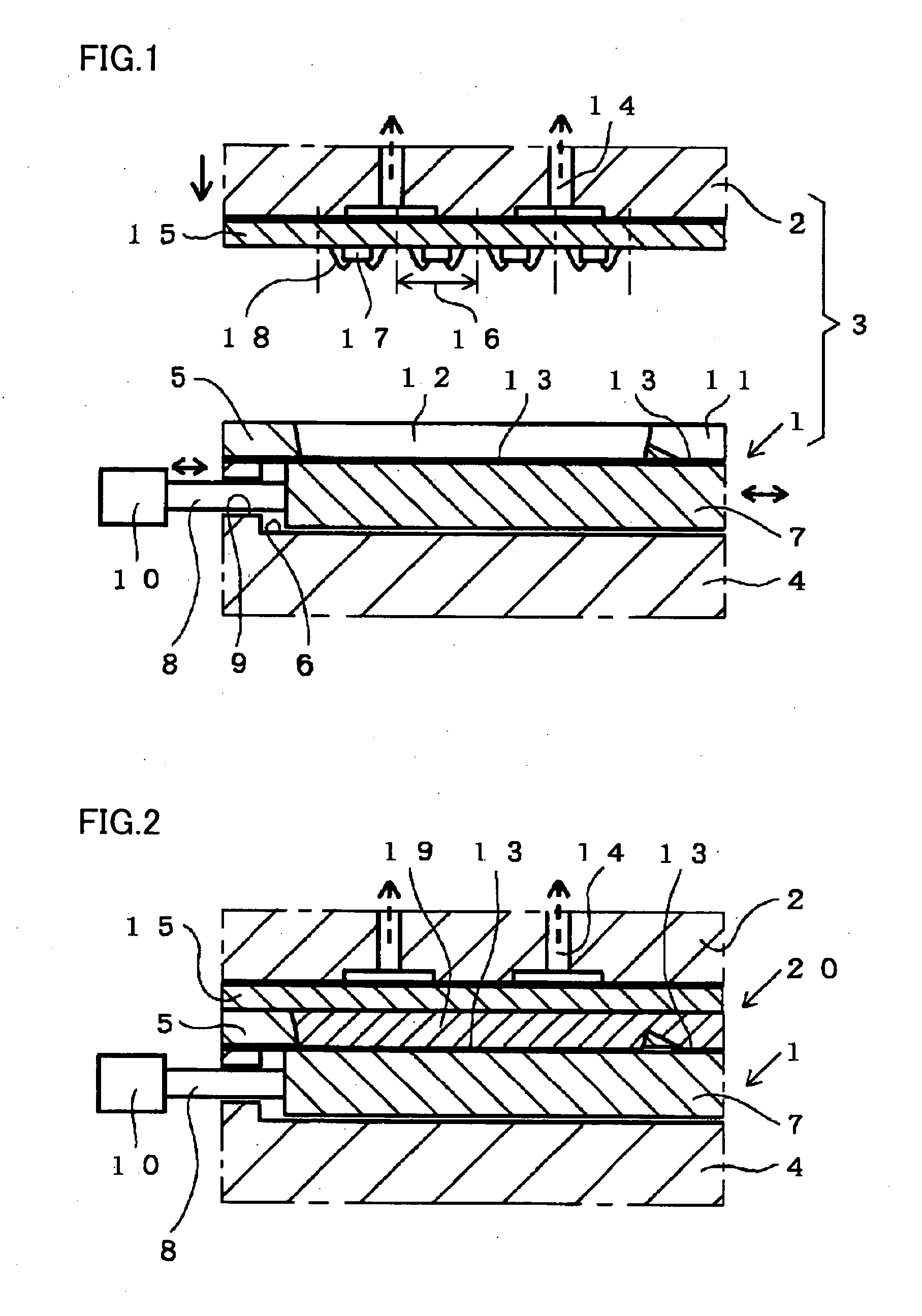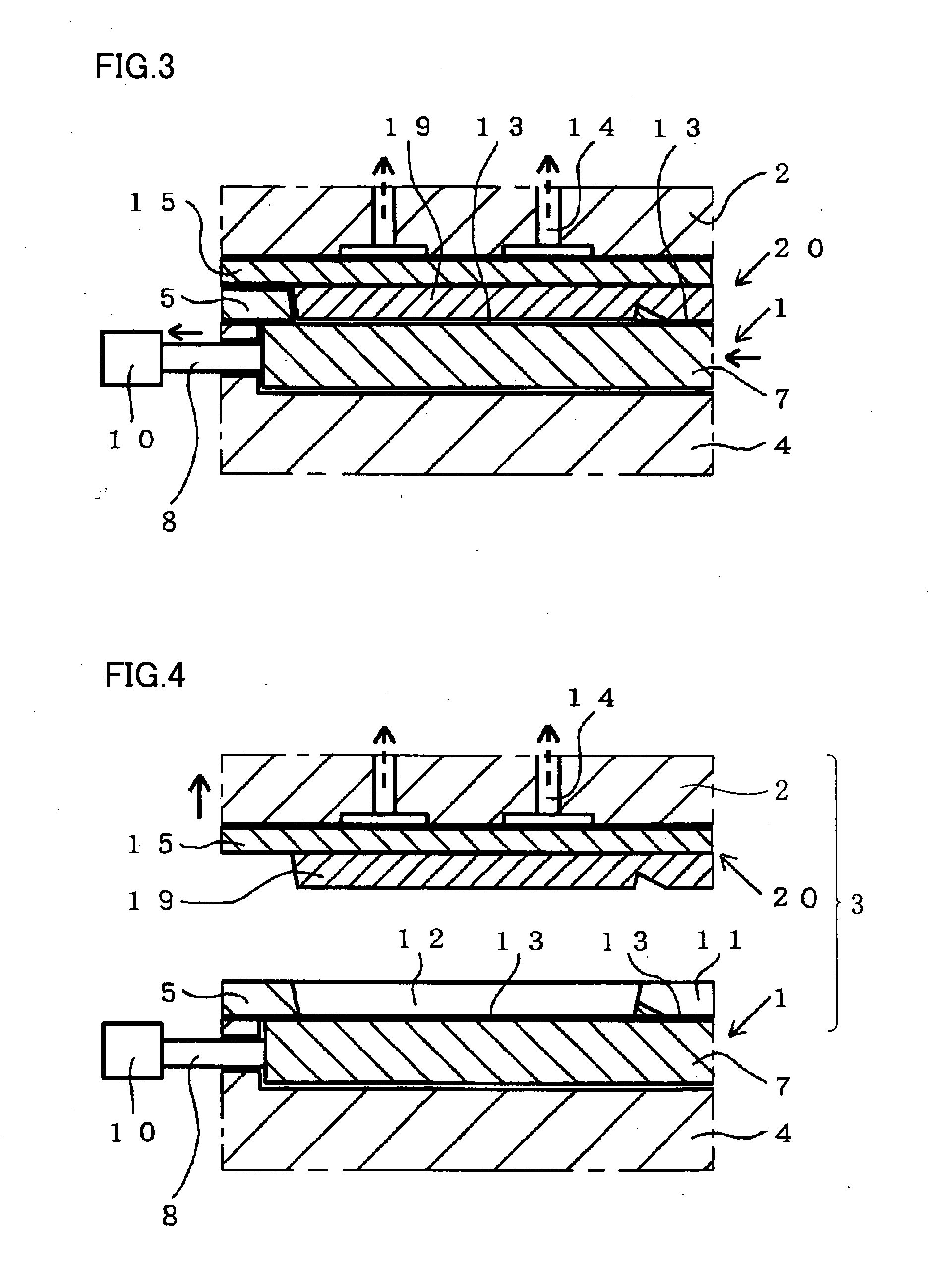Resin casting mold and method of casting resin
a resin casting and mold technology, applied in the direction of dough shaping, manufacturing tools, applications, etc., can solve the problems of reducing driving efficiency, unable to provide smaller resin casting equipment including molds, so as to achieve high driving efficiency and large size
- Summary
- Abstract
- Description
- Claims
- Application Information
AI Technical Summary
Benefits of technology
Problems solved by technology
Method used
Image
Examples
first embodiment
[0034] First, referring to FIGS. 1 to 4, a resin casting mold and a method of casting a resin according to a first embodiment of the present invention will be described. Description will be made of a method of casting a resin for manufacturing a package for a plurality of electronic components where transfer molding is employed to resin-seal a plurality of chips mounted on one board. Thus, a casting product of the present invention is a group of a plurality of packages of the present embodiment.
[0035] As shown in FIG. 1, a resin casting mold 3 of the present embodiment includes a lower mold 1 and an upper mold 2 opposite to lower mold 1, and is used in resin-sealing employing transfer molding.
[0036] Lower mold 1 includes a base 4, an opposing member 5 secured to base 4 and opposite to upper mold 2, a recess 6 provided in base 4, and a block 7 placed within recess 6 and slidable in a horizontal direction. A rod 8 is secured to a side of block 7 and to a driver mechanism 10 via a ho...
second embodiment
[0052] Now, referring to FIGS. 3 and 4, a resin casting mold and a method of casting a resin according to a second embodiment of the present invention will be described. The method of the present embodiment is characterized by opening lower and upper molds 1 and 2 during the step shown in FIG. 3, i.e. the step of using driver mechanism 10 to move block 7 in a horizontal direction (to the left in the figures).
[0053] Preferably, the opening of lower and upper molds 1 and 2 begins directly after block 7 begins to be moved in the case of a thinner casting product 20 with a larger major surface, i.e. when it is required to minimize the stress upon casting product 20 during the separation of casting product 20 from resin casting mold 3.
[0054] The method of casting a resin of the present embodiment described above achieves proper separation for casting product 20 since a shearing stress and a tensile stress act between bottom surface 13 and the lower surface of cured resin 19 with the lo...
PUM
| Property | Measurement | Unit |
|---|---|---|
| Force | aaaaa | aaaaa |
Abstract
Description
Claims
Application Information
 Login to View More
Login to View More - R&D
- Intellectual Property
- Life Sciences
- Materials
- Tech Scout
- Unparalleled Data Quality
- Higher Quality Content
- 60% Fewer Hallucinations
Browse by: Latest US Patents, China's latest patents, Technical Efficacy Thesaurus, Application Domain, Technology Topic, Popular Technical Reports.
© 2025 PatSnap. All rights reserved.Legal|Privacy policy|Modern Slavery Act Transparency Statement|Sitemap|About US| Contact US: help@patsnap.com



